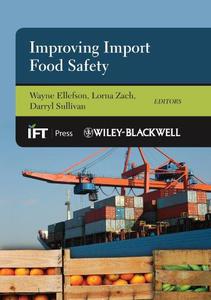 Improving Import Food Safety By
Improving Import Food Safety By2012 | 357 Pages | ISBN: 0813808774 | PDF | 3 MB
Food safety has been a global concern for many years. While global sourcing of foods and ingredients provides great opportunity for variety and diversity of cultural products, there are significant risks. Programs that regulate food safety and quality in countries around the world vary in their scope and effectiveness, with many being underfunded. Rapidly developing countries may lack the expertise, laboratory resources for testing, and established inspection programs to adequately promote the safety of foods. Rather, these countries may be more focused on providing enough food for their citizens. Lack of documentation or traceability in the exporting country can further exacerbate the situation. Of course, safety problems in food imported from more developed countries also occur, and the source of food borne disease outbreaks are found regularly within the United States.Improving Import Food Safety gathers together vital information on the food safety programs of national governments, the food industry, and the testing industry. Chapters have been contributed by authors from the United States, Latin America, Europe, and Asia. Readers will learn about a variety of regulatory approaches to food safety at the federal and state levels in the United States, as well as in selected countries and within the food industry itself. They will also gain insights into the nature and source of safety problems, in addition to approaches to food safety around the world.The book is divided into three sections:Highlighting Key Issues: authors illustrate the millions of permutations for the origin of ingredients, discussing the difficulty if policing imports, providing a unique perspective on the economic situation in China and insight into development of support for small farm producers in Mexico.Legal and Regulatory Issues/Structures in the USA and Abroad: describes the legal and regulatory system in the European Union, the United States, and China, plus a chapter addressing global approaches to fraud.Potential Strategies to Improve Import Safety: presents strategies to deal with what are ultimately global issues, but on multiple levels. Perspectives are provided by authors from Industry, and industry trade association, academia, and a recently semi-retired, global ambassador or food safety.Readers will find this book noteworthy because of the diverse topics and perspectives offered on the challenges of keeping food safe in a global economy. Authors come from a variety of backgrounds, and each has provided a unique perspective on this critical topic. The volume is aimed at importers and exporters of food and ingredients; food microbiologists, food safety and QC/QA personnel; regulatory and legal personnel in food manufacturing companies; food policy makers and regulatory officials and facility and graduate students in food science.Content: Chapter 1 Emerging Global Food System Risks and Potential Solutions (pages 1-20): Shaun KennedyChapter 2 A Cooperative Federal-State Approach for Monitoring Imported Foods: Reviewing the New York State Model (pages 21-44): Joe CorbyChapter 3 The Impact of the Chinese Development Model on Food Safety (pages 45-64): Wenran JiangChapter 4 The Role of Public-Private Partnerships on the Access of Smallholder Producers of Mexican Cantaloupe to Fresh Produce Export Markets (pages 65-85): Belem Avendano, Clare Narrod and Marites TiongcoChapter 5 Improving US Regulation of Imported Foods* (pages 87-109): Neal FortinChapter 6 Eu Food Safety Regulation and Trust?enhancing Principles (pages 111-131): Ellen Vos*Chapter 7 Experience of Food Safety Authorities in Europe and the Rapid Alert System (pages 133-149): Roger WoodChapter 8 The Development of and Challenges Facing Food Safety Law in the People's Republic of China (pages 151-194): Yuanyuan ShenChapter 9 Defining Food Fraud and the Chemistry of The Crime (pages 195-216): John SpinkChapter 10 Tracking and Managing the Next Crisis (pages 217-234): Henry Chin, Nancy Rachman and Maia JackChapter 11 Food Product Tracing (pages 235-249): Jennifer McEntireChapter 12 Improving the Safety of Imported Foods With Intelligent Systems (pages 251-274): William Nganje, Na Hu, Timothy Richards and Albert KaganChapter 13 Testing with Confidence in the Pursuit of Global Food Safety (pages 275-291): Ronald L. Johnson and Robert E. KoeritzerChapter 14 Global Food Protection (pages 293-302): William H. SperberChapter 15 Summary and Recommendations for the Safety of Imported Foods (pages 303-334): Lorna Zach, M. Ellin Doyle, Vicki Bier and Chuck Czuprynski



![S.T.A.L.K.E.R. 2 / STALKER 2: Heart of Chornobyl - Ultimate Edition (2024) [+UPDATE 23.12.2024 - v1.1.3] ElAmigos / Polska wersja językowa](https://i.postimg.cc/Zqd8RWGY/UZG8PBE.jpg)



































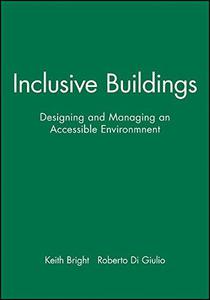

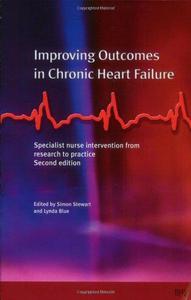

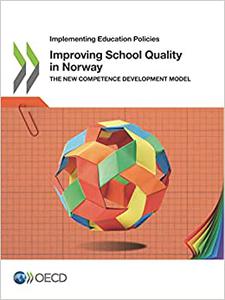
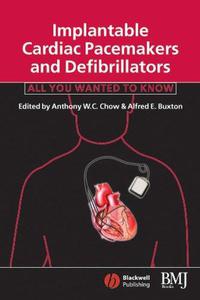

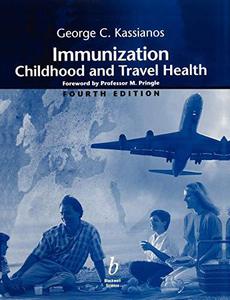








![David Gilmour - Luck and Strange (2024) [FLAC]](https://i.imgur.com/everaBc.jpeg)
![Męskie Granie Orkiestra - Męskie Granie 2024 (2024) [FLAC]](https://i.imgur.com/FAyOxrM.jpeg)
![The Rolling Stones - Hackney Diamonds (2023) [FLAC]](https://i.imgur.com/wCkyyUN.jpg)
![Lady Gaga - Harlequin (2024) [FLAC]](https://i.imgur.com/dcgIA8D.jpeg)
![Natalia Kukulska - Dobrostan (2024) [FLAC]](https://i.imgur.com/bdljG3O.jpeg)
![Kaśka Sochacka - Ta druga (2024) [FLAC]](https://i.imgur.com/hORQKvn.jpeg)
![Kuba Sienkiewicz - Pani Bóg (2024) [FLAC]](https://i.imgur.com/qijCx8Z.jpeg)
![Lanberry - Heca (2024) [FLAC]](https://i.imgur.com/8P7QfeR.jpeg)
![Sara James - PLAYHOUSE (2024) [FLAC]](https://i.imgur.com/m4f8OKg.jpeg)
![Grzegorz Hyży - EPILOG (2024) [FLAC]](https://i.imgur.com/8DA2sBr.jpeg)
![Myslovitz - WIECZORAMI CHŁOPCY WYCHODZĄ NA ULICE (2024) [FLAC]](https://i.imgur.com/l9mMtIG.jpeg)
![Krzysztof Zalewski - ZGŁOWY (2024) [FLAC]](https://i.imgur.com/vh48RAc.jpeg)
![Krzysztof Cugowski - Wiek to tylko liczba (2024) [FLAC]](https://i.imgur.com/SBzgqe2.jpeg)
![Nosowska - Kasia i Błażej (2024) [FLAC]](https://i.imgur.com/mObvVXQ.jpeg)
![sanah - Pianinkowe Kaprysy (2024) [FLAC]](https://i.imgur.com/pVjjPAa.jpeg)
![Kwiat Jabłoni - Pokaz slajdów (2023) [FLAC]](https://i.imgur.com/diERHfZ.jpg)
![Robert Cichy - Spacer po Warszawie (2024) [FLAC]](https://i.imgur.com/ixleU9o.jpeg)
![Viki Gabor - Terminal 3 (2024) [FLAC]](https://i.imgur.com/Q1KCnDs.jpeg)
![Sanah - Kaprysy (2024) [FLAC]](https://i.imgur.com/71OZm4h.jpeg)
![Męskie Granie Orkiestra - Męskie Granie 2023 (2023) [FLAC]](https://i.imgur.com/U4YHo8d.jpg)




